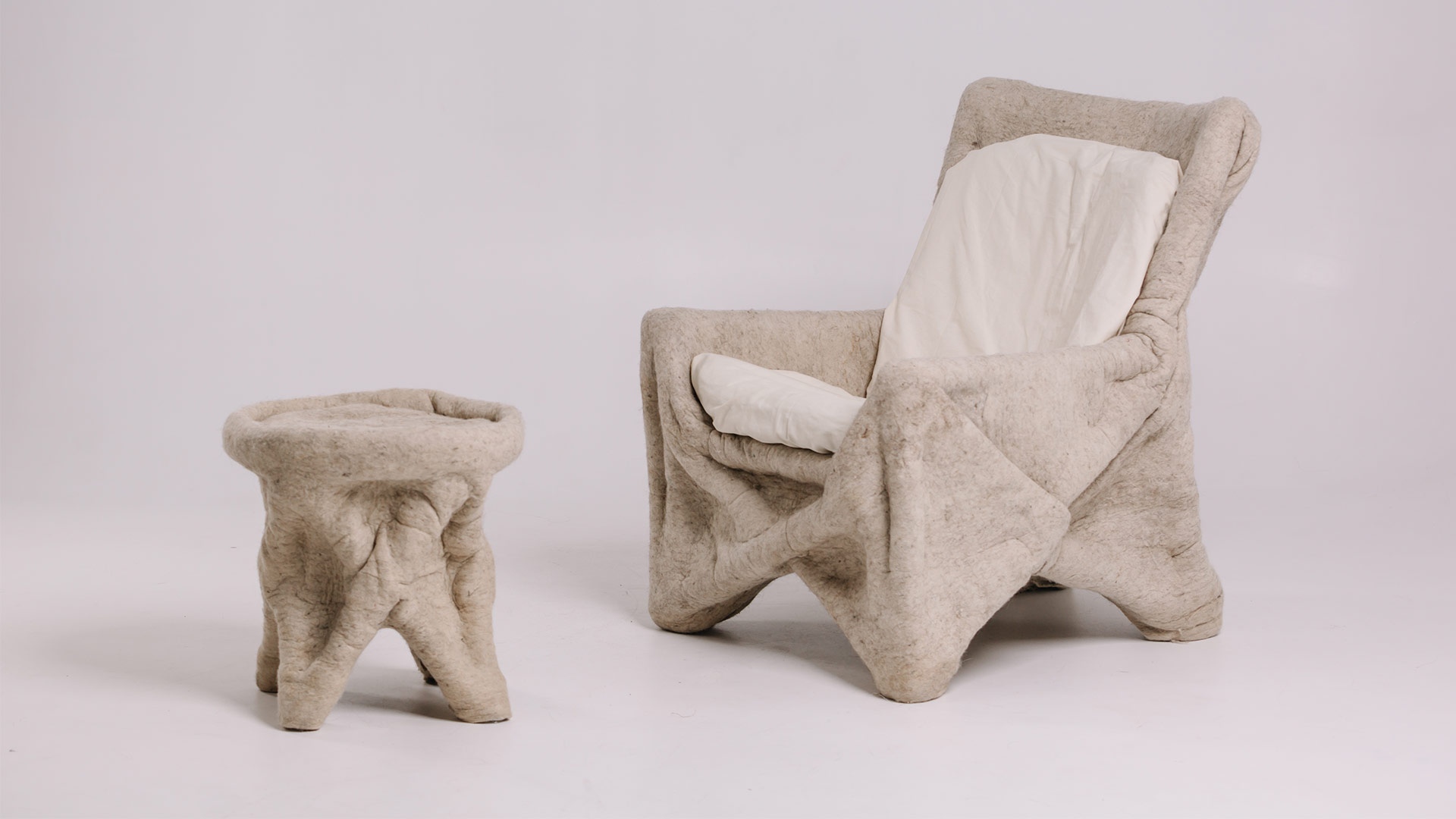“I want my projects to convey to the audience the understanding that there is an alternative way of living in harmony with nature and that the mission of our generation is the careful dismantling of the predatory system that destroys the planet,” exclaims Kazakhstan-based designer Daniyar Uderbekov. There are multiple instances where designers set out in pursuits of solutions pertaining to critical domains such as sustainability, finding their way back to their cultural roots in the process. Coexisting with nature is an aspect deeply woven into the traditional know-how observed within countless cultures across the globe. As humankind moves towards the future with a yearning to mend ties with nature, is it time to revisit the abandoned treasure troves of culture?
The Kazakh product designer unveils his latest ensemble of objects that address and employ facets of sustainable design and his own cultural identity. Drawing inspiration from Kazakh and nomadic culture, yurt construction, archaic technologies, and materials, Uderbekov's latest development encompasses furniture pieces donned in natural felt made of sheep wool. This exploration culminates in the Felt collection, a repository of designs such as an armchair and an ottoman. Each furniture design is a functional and skilful amalgamation of centuries-old heritage and modern digital technologies. “The creation of the chair and ottoman forms were inspired by rationality. I set myself the goal of using the minimum number of sticks for the frame and for the frame attachment points (13 pieces) so that the reliability of the design is maintained,” explains Uderbekov.
Environmental consciousness emerged as the primary requirement of this product design collection. Taking cues from the experiences of previous generations, who by definition, consciously practised sustainability by living in harmony with nature (and thereby, respecting it), Uderbekov conceives the soft and inviting frames. “The planet is already littered because people have not thought about where the material comes from and where it goes, and it is a crime to produce another unnecessary thing,” he rightfully points out. People of Kazakhstan have continued to live in the vast expanses of Eurasia, in the depths of the continent, where severe weather conditions range from -40 degrees Celsius in winter to +40 degrees Celcius during summers. “My people have not only lived, but also flourished, absorbing the culture of other people with interest for many centuries, and I am glad that we still use this wonderful material as felt,” the designer mentions.
The project employs three materials. The first one, PET plastic from plastic bottles, is cut into strips which are then passed through a machine. The output is a finished filament wound on a coil, ready for 3D printing. “My project took 3.5 kg of plastic bottles. In my chair, there are 13 pieces of printed assemblies made of PET plastic. These knots fasten and hold the wooden elements of the frame,” the furniture designer explains. Wooden sticks from garden tools with a diameter of four centimetres essay the second material component. These are the guides of the chair frame and ottomans, and are bought directly at the hardware store. The third and most important material employed is sheep wool felt, the traditional Kazakh national material referred to as the 'first textile of mankind.' The chair design is clad entirely in one large piece of felt, almost resembling a thick leather chair. “Felt is soft to the touch, ethical and eco-friendly since the animal does not suffer when cutting wool. Felt also decomposes in the soil, like any wool. The most important quality of it is that it breathes, is breathable, and is not made in an industrial way,” Uderbekov comments.
Several objects partake in this series, such as a table design and a folding rack, and the designer plans to expand this troupe with a new armchair, a floor lamp, and a felt+marble table. Uderbekov’s ethos revolves around innovation, sustainability, and his heritage—three pillars lucidly guiding his oeuvre. His admiration for his native culture and his identity that originates from it channel through his creations, or in his words, “manifest itself in the design,” without the need to intentionally strengthen it. His commitment towards sustainability is evident from the very beginning of the design process, with each material carefully selected and sought. The Felt collection represents a plausible alternative to the currently rampant exploitative systems that gnaw at the planet's health. Along with its creative semantics, it is a reminder that the planet bears the brunt of “all the so-called benefit of civilisation,” and this illusion is one we must refuse to give in to—and perhaps, assaying the obsolete holds some answers.






 Sign in with email
Sign in with email










What do you think?